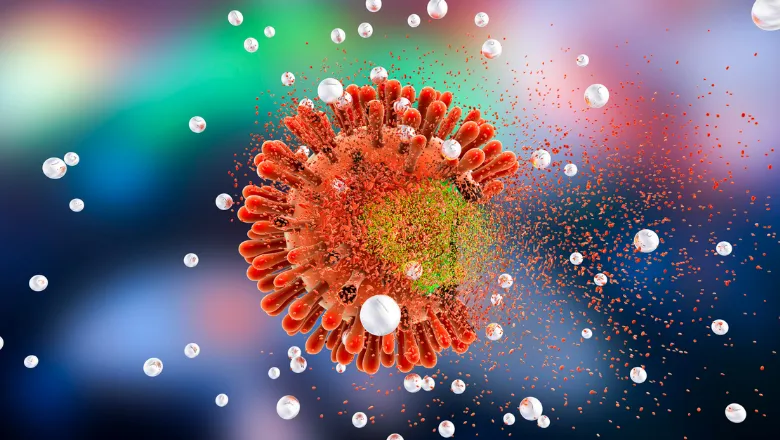We are extremely grateful to the EPSRC for funding this project. We hope that this technology will be used to prevent further outbreaks of COVID-19 and help keep our healthcare workers safe by allowing them to quickly recognise surfaces contaminated with the virus.
Dr Nunzianda Frascione, School of Population Health & Environmental Sciences
07 April 2021
Researchers receive EPSRC grant to develop biosensor for the detection of coronavirus
The new technology will be used to quickly recognise surfaces contaminated with the virus.

The high survivability of the virus on surfaces, such as metal, plastic, glass, and some fabrics, means that surface transmission is likely to play a key role in the spread of hospital-acquired COVID-19 infections.
With the pandemic still not under control on a global scale, effective monitoring of surfaces potentially contaminated with SARS-CoV-2 is vital to manage infection rates. However, such environmental monitoring efforts are limited by the length of current viral testing processes (i.e., swabbing, genomic extraction, and RT-PCR), preventing the identification of viral contamination in real time.
To address this issue, researchers at King’s have been awarded £383,663 funding from the Engineering and Physical Sciences Research Council (EPSRC), to develop technology to visualise novel coronavirus on surfaces.
The project, entitled ‘DisCoVer: Aptamer biosensors for the detection of SARS-CoV-2 on surfaces’, will be a collaboration between Dr Nunzianda Frascione and Dr James Gooch from the School of Population Health & Environmental Sciences and Professor Mark Green and Professor Chris Lorenz from the Department of Physics.
The work will involve the development of an optical biosensor towards SARS-CoV-2. Through delivery of surfaces as part of an aerosolised spray reagent, the sensor will allow the ‘stand-off’ visualisation of viral deposits through the production of discrete areas of fluorescence, thereby allowing healthcare workers to quickly triage objects in need of decontamination. Sensing will be based on ‘aptamer’ recognition, in which synthetic DNA sequences are used to bind the virus and ‘turn-on’ the fluorescence of polymer nanoparticles.
We believe that, once developed, this platform can in future be adapted and applied to the detection of other pathogens, therefore widening its appeal.
Dr Nunzianda Frascione, School of Population Health & Environmental Sciences




